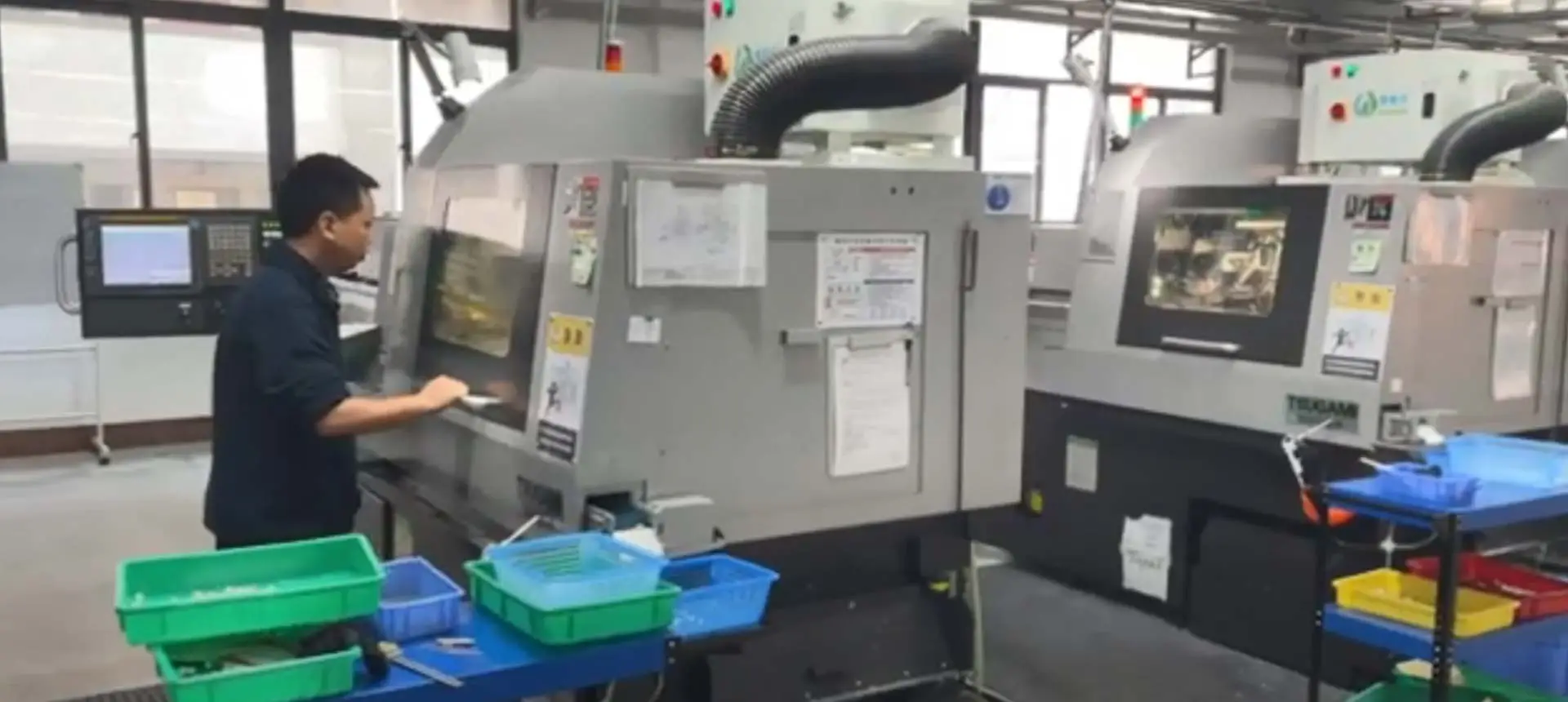
ที่บริษัทของเราเราใช้กระบวนการที่มีประสิทธิภาพสูงในการผลิตชิ้นส่วนเครื่องจักรกลซีเอ็นซีที่ตอบสนองความต้องการเฉพาะของลูกค้าของเรา นี่คือภาพรวมของกระบวนการที่เราปฏิบัติตาม:
การออกแบบและการเขียนโปรแกรม: วิศวกรที่มีทักษะของเราทำงานร่วมกับซอฟต์แวร์ล่าสุดในการออกแบบและตั้งโปรแกรมส่วนต่างๆเพื่อให้มั่นใจว่าเป็นไปตามข้อกำหนดและความคลาดเคลื่อนที่จำเป็น
การเลือกวัสดุ: เราเลือกวัสดุที่เหมาะสมสำหรับชิ้นส่วนอย่างระมัดระวังโดยคำนึงถึงความแข็งแรงความทนทานและคุณสมบัติอื่นๆ
เครื่องจักรกลซีเอ็นซี: เราใช้เครื่องควบคุมคอมพิวเตอร์ขั้นสูงเพื่อดำเนินการกระบวนการตัดเฉือนซีเอ็นซีซึ่งเกี่ยวข้องกับการกำจัดวัสดุส่วนเกินออกจากชิ้นงานเพื่อสร้างรูปร่างสุดท้ายของส่วน
การตรวจสอบคุณภาพ: ทีมงานของเราตรวจสอบชิ้นส่วนในทุกขั้นตอนของกระบวนการโดยใช้เทคโนโลยีและอุปกรณ์ล่าสุดเพื่อให้แน่ใจว่าแต่ละส่วนตรงตามมาตรฐานคุณภาพที่ต้องการ
การตกแต่ง: เรามีตัวเลือกการตกแต่งที่หลากหลายรวมถึงการเป่าด้วยทรายการขัดอโนไดซ์และการเคลือบผิวเพื่อเพิ่มรูปลักษณ์และการทำงานของชิ้นส่วน
บรรจุภัณฑ์และการจัดส่ง: เราบรรจุชิ้นส่วนอย่างระมัดระวังเพื่อให้แน่ใจว่าสินค้ามาถึงอย่างปลอดภัยและส่งมอบให้กับลูกค้าของเราทันที
ด้วยความมุ่งมั่นของเราในด้านคุณภาพประสิทธิภาพและความพึงพอใจของลูกค้าเราได้สร้างชื่อเสียงในฐานะผู้ให้บริการที่เชื่อถือได้ของชิ้นส่วนเครื่องจักรกลซีเอ็นซีที่กำหนดเอง หากคุณมีโครงการที่ต้องการชิ้นส่วนเครื่องจักรกลซีเอ็นซีคุณภาพสูงโปรดติดต่อเราเพื่อหารือเกี่ยวกับความต้องการของคุณและวิธีที่เราสามารถช่วยได้
คำอธิบายของภาพ | เครื่องกัดซีเอ็นซี | การหมุน CNC |
วัสดุที่ใช้ในการผลิต | อลูมิเนียม/cu/ เหล็ก/สแตนเลส | อลูมิเนียม/cu/ เหล็ก/สแตนเลส |
ขนาดชิ้นส่วนสูงสุด | 1000มม. * 1000มม. * 600มม | 1000มม. * 600มม. * 600มม |
เวลานำมาตรฐาน | 4วันทำการครับ | 4วันทำการครับ |
ความอดทน (± มม.) | การกัดเท่านั้น: สูงสุด ± 0.025mm ด้วยการตัดลวดหรือ EDM: สูงสุด0.002มม | สูงสุด ± 0.0025มม. |
การประกันคุณภาพ | ISO 9001, ISO 45001:2018 ซัพพลายเออร์ออดิโอ CMM และ2D การวัดขนาดโปรเจ็คเตอร์ รายงานการตรวจสอบ การตรวจสอบการทำงาน การสุ่มตัวอย่างแบบกำหนดเอง | ISO 9001, ISO 45001:2018 ซัพพลายเออร์ออดิโอ CMM และ2D การวัดขนาดโปรเจ็คเตอร์ รายงานการตรวจสอบ การตรวจสอบการทำงาน การสุ่มตัวอย่างแบบกำหนดเอง |
ความแม่นยำและความแม่นยำสูง: ด้วยเครื่องจักรซีเอ็นซีชิ้นส่วนสามารถผลิตได้ด้วยความคลาดเคลื่อนที่แน่นและความแม่นยำสูงให้ระดับความสอดคล้องที่ยากที่จะบรรลุด้วยกระบวนการตัดเฉือนด้วยตนเอง
วัสดุหลากหลาย: เครื่องจักรกลซีเอ็นซีสามารถใช้กับวัสดุที่หลากหลายรวมถึงโลหะพลาสติกไม้และคอมโพสิต
คุ้มค่าสำหรับการผลิตในปริมาณมาก: การตัดเฉือน CNC เหมาะอย่างยิ่งสำหรับการผลิตในปริมาณมากเนื่องจากช่วยให้การผลิตชิ้นส่วนในปริมาณมากในราคาที่ต่ำกว่าต่อชิ้น
ประสิทธิภาพที่เพิ่มขึ้น: ลักษณะอัตโนมัติของเครื่องจักรกลซีเอ็นซีหมายความว่าการผลิตสามารถดำเนินการได้อย่างมีประสิทธิภาพมากขึ้นโดยไม่จำเป็นต้องมีการแทรกแซงด้วยตนเองส่งผลให้เวลาในการผลิตเร็วขึ้น
ความเก่งกาจ: เครื่องจักรกลซีเอ็นซีสามารถใช้ในการผลิตส่วนประกอบที่ซับซ้อนที่มีรูปร่างที่ซับซ้อนและรูปทรงเรขาคณิตทำให้เหมาะสำหรับการใช้งานที่หลากหลาย
ในขอบเขตของการผลิตที่มีความแม่นยำการควบคุมเชิงตัวเลขคอมพิวเตอร์ (CNC) เครื่องจักรกลยืนเป็นความมหัศจรรย์ทางเทคโนโลยีที่ได้ปฏิวัติอุตสาหกรรมการผลิต การตัดเฉือน CNC เกี่ยวข้องกับการใช้ระบบคอมพิวเตอร์เพื่อควบคุมเครื่องมือและกระบวนการของเครื่องจักรทำให้สามารถผลิตชิ้นส่วนและส่วนประกอบที่ซับซ้อนได้อย่างแม่นยำและมีประสิทธิภาพสูง กระบวนการตัดเฉือน CNC ต่างๆภายใต้ HHC มีขอบเขตการใช้งานและลักษณะการประมวลผลที่แตกต่างกัน ต่อไปนี้ให้การจัดหมวดหมู่และการแนะนำโดยละเอียด
หนึ่งในประเภทที่พบมากที่สุดของเครื่องจักรกลซีเอ็นซี, มิลลิ่งใช้เครื่องมือตัดหมุนเพื่อลบวัสดุออกจากชิ้นงาน เครื่องกัดสามารถเคลื่อนที่ไปตามแกนหลายแกนสร้างรูปทรงช่องและรูที่หลากหลาย ตั้งแต่ส่วนประกอบที่เรียบง่ายไปจนถึงต้นแบบที่ซับซ้อนการกัดนั้นใช้งานได้หลากหลายและใช้กันอย่างแพร่หลายในอุตสาหกรรมต่างๆเช่นการบินและอวกาศยานยนต์และอิเล็กทรอนิกส์
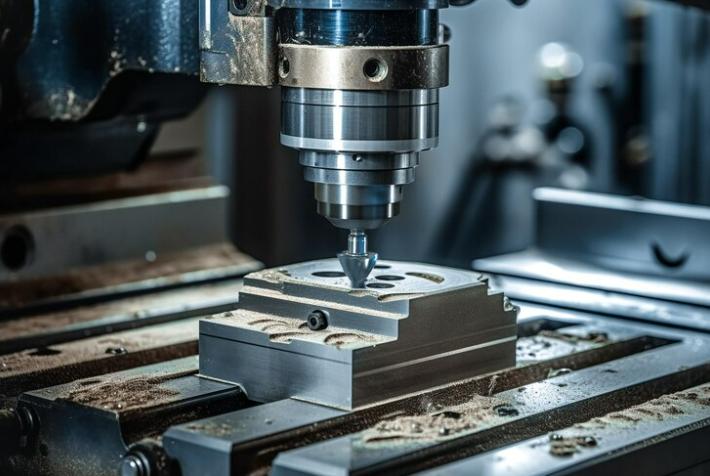
ในการหมุนชิ้นงานจะหมุนในขณะที่เครื่องมือตัดรูปร่างลงในรูปแบบที่ต้องการ เครื่องจักรกลซีเอ็นซีชนิดนี้เหมาะสำหรับการสร้างส่วนประกอบทรงกระบอกเช่นเพลาสลักเกลียวและแกนหมุน การเปลี่ยนความแม่นยำเป็นรากฐานที่สำคัญของกระบวนการผลิตให้ประสิทธิภาพและความถูกต้องสำหรับการใช้งานต่างๆ
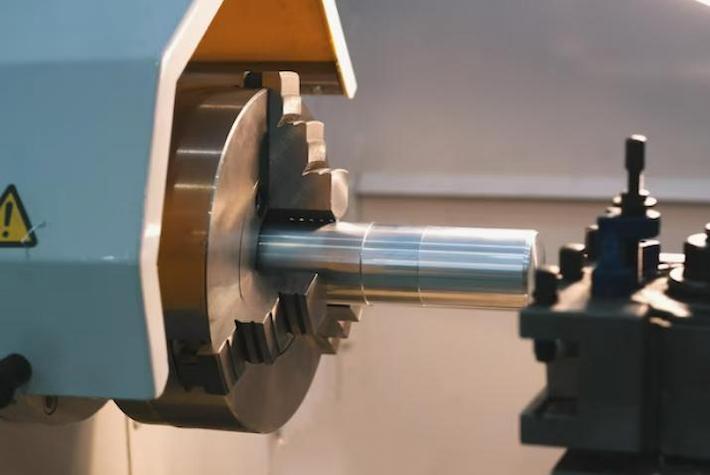
ตามชื่อแนะนำการเจาะเครื่อง CNC ได้รับการออกแบบมาเพื่อสร้างรูในชิ้นงาน เครื่องเหล่านี้ใช้ดอกสว่านหมุนเพื่อขจัดวัสดุและมีความสำคัญในการผลิตส่วนประกอบที่ต้องการรูที่แม่นยำและสม่ำเสมอ อุตสาหกรรมเช่นการก่อสร้างโลหะและอิเล็กทรอนิกส์พึ่งพาการเจาะซีเอ็นซีสำหรับความต้องการในการผลิตของพวกเขา
เมื่อความแม่นยำสูงและพื้นผิวเสร็จสิ้น Paramount, CNC บดเข้ามาในการเล่น วิธีนี้ใช้ล้อขัดเพื่อลบวัสดุและบรรลุความคลาดเคลื่อนแน่น การเจียร CNC เป็นสิ่งที่ขาดไม่ได้ในการผลิตเครื่องมือแม่พิมพ์และส่วนประกอบที่มีความแม่นยำสูงที่ใช้ในอุปกรณ์ทางการแพทย์และวิศวกรรมการบินและอวกาศ
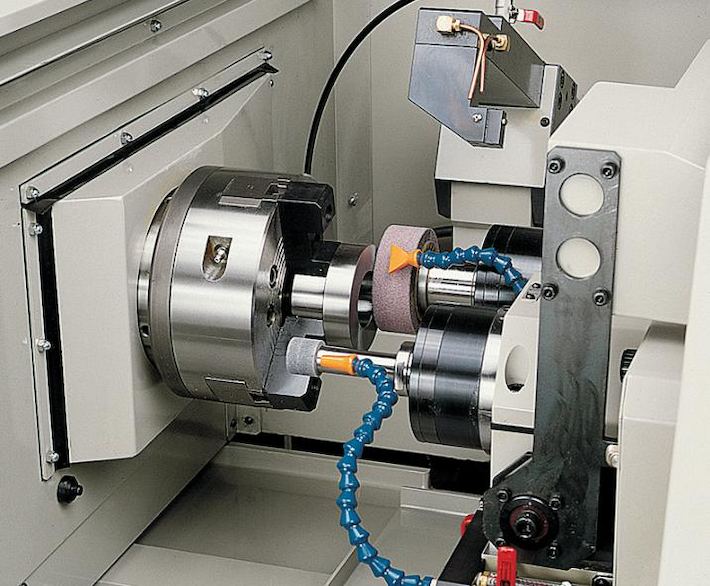
EDM เป็นวิธีการตัดเฉือน CNC แบบดั้งเดิมที่ไม่ใช่แบบดั้งเดิมซึ่งใช้การปล่อยไฟฟ้าเพื่อสร้างรูปร่างวัสดุ ด้วยประกายไฟไฟฟ้าที่ควบคุมอย่างระมัดระวัง EDM สามารถสร้างรูปร่างที่ซับซ้อนและซับซ้อนด้วยความแม่นยำสูง เทคนิคนี้มีประโยชน์อย่างยิ่งสำหรับโลหะหนักที่ท้าทายเครื่องจักรด้วยวิธีการแบบดั้งเดิม ตัวอย่างเช่นเราใช้เครื่องตัดเฉือนไฟฟ้า (EDM) เพื่อปรับแต่งเทมเพลตสำหรับแม่พิมพ์
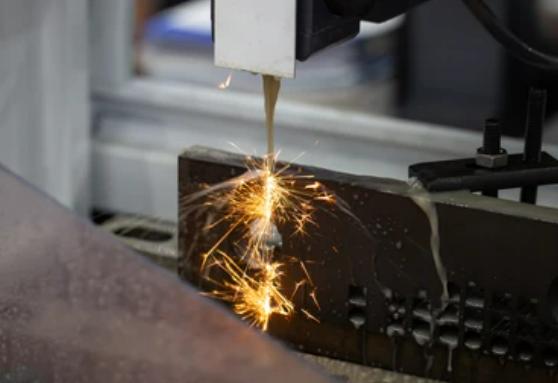
การตัดด้วยเลเซอร์ CNC เกี่ยวข้องกับการใช้ลำแสงเลเซอร์เพื่อตัดผ่านวัสดุสร้างขอบที่แม่นยำและสะอาด วิธีการนี้ใช้กันอย่างแพร่หลายในการผลิตชิ้นส่วนโลหะแผ่นสำหรับอุตสาหกรรมตั้งแต่ยานยนต์ไปจนถึงอิเล็กทรอนิกส์สำหรับผู้บริโภค ความแม่นยำและความเร็วในระดับสูงทำให้การตัดด้วยเลเซอร์ CNC เป็นกระบวนการอันล้ำค่าในการผลิตที่ทันสมัย
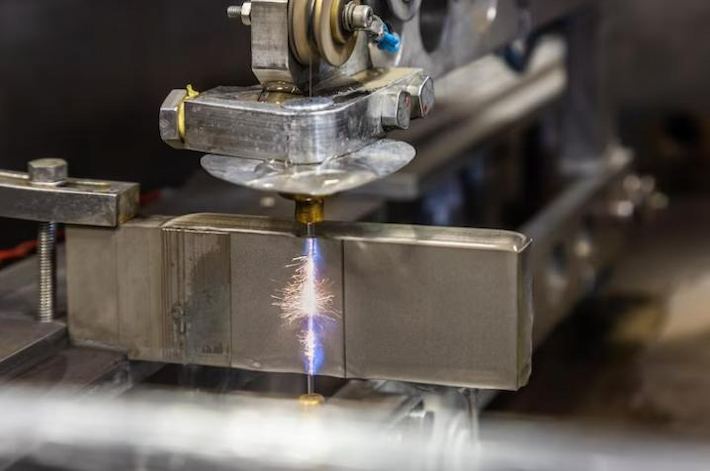
ในภูมิทัศน์ที่มีการพัฒนาอย่างต่อเนื่องของการผลิตเทคโนโลยีที่ทันสมัยสองแห่งได้กลายเป็น frontrunners: เครื่องจักรกลซีเอ็นซีและการพิมพ์3D แต่ละวิธีนำชุดจุดแข็งและการใช้งานของตัวเองไปยังตาราง ลองเจาะลึกถึงความซับซ้อนของเครื่องจักรกลซีเอ็นซีและการพิมพ์3D เปรียบเทียบคุณสมบัติข้อดีและข้อจำกัดของพวกเขา
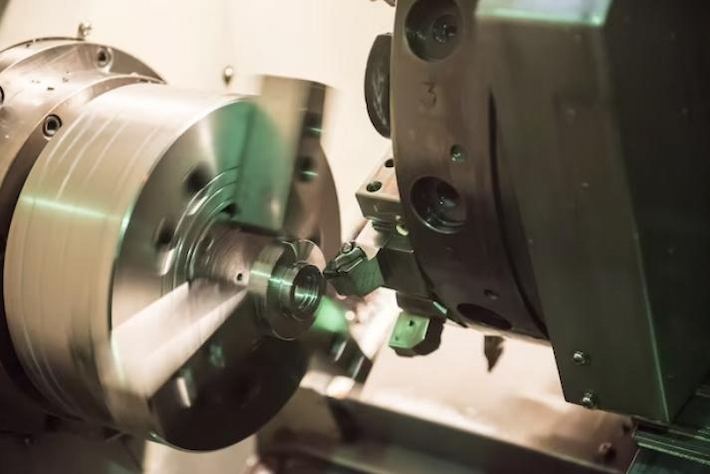
เครื่องจักรกลซีเอ็นซี (การควบคุมเชิงตัวเลขด้วยคอมพิวเตอร์) เป็นกระบวนการผลิตแบบลบ มันเกี่ยวข้องกับการเอาวัสดุออกจากชิ้นงานเพื่อให้ได้รูปร่างที่ต้องการ กระบวนการนี้ใช้การออกแบบด้วยคอมพิวเตอร์ (CAD) และซอฟต์แวร์การผลิต (CAM) ที่ใช้คอมพิวเตอร์เพื่อควบคุมการเคลื่อนไหวของเครื่องมือตัดได้อย่างแม่นยำ
เครื่องจักรกลซีเอ็นซีมีชื่อเสียงในด้านความแม่นยำและความแม่นยำในระดับสูง มันสามารถบรรลุความคลาดเคลื่อนแน่นและผลิตรายละเอียดที่ซับซ้อนทำให้เหมาะสำหรับการใช้งานที่ความแม่นยำเป็นสิ่งสำคัญยิ่งเช่นการบินและอวกาศและอุตสาหกรรมทางการแพทย์ การตัดเฉือน CNC นั้นใช้งานได้หลากหลายเมื่อพูดถึงความเข้ากันได้ของวัสดุ สามารถจัดการกับวัสดุได้หลากหลายรวมถึงโลหะพลาสติกและคอมโพสิต ทำให้เป็นทางเลือกที่ต้องการสำหรับอุตสาหกรรมที่ต้องการความทนทานและความแข็งแรงในส่วนประกอบของพวกเขา เครื่องจักรกลซีเอ็นซีเหมาะอย่างยิ่งสำหรับทั้งการสร้างต้นแบบและการผลิตขนาดใหญ่ ในขณะที่เวลาในการติดตั้งสำหรับเครื่องจักรกลซีเอ็นซีสามารถใช้งานได้นานกว่าการพิมพ์3D มันเก่งในการผลิตชิ้นส่วนที่มีคุณภาพสูงและการทำงาน เครื่องจักรกลซีเอ็นซีให้พื้นผิวที่เหนือกว่าเมื่อเทียบกับเทคโนโลยีการพิมพ์3D จำนวนมาก ทำให้เป็นตัวเลือกที่เหมาะสำหรับส่วนประกอบที่ต้องการพื้นผิวที่ขัดหรือเรียบ
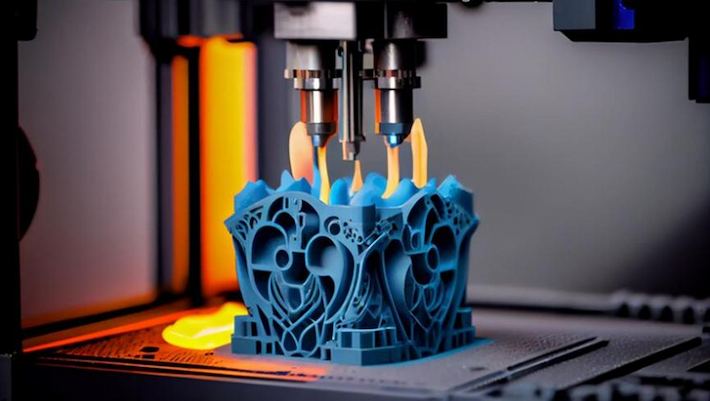
การพิมพ์3D หรือการผลิตสารเติมแต่งสร้างวัตถุทีละชั้นจากรุ่นดิจิทัล มันเกี่ยวข้องกับวัสดุฝากในรูปแบบเฉพาะเพื่อสร้างวัตถุสามมิติ กระบวนการนี้มีความหลากหลายสูงและช่วยให้ geometries ที่ซับซ้อน
การพิมพ์3D รองรับวัสดุที่หลากหลายรวมถึงพลาสติกโลหะเซรามิกและแม้แต่วัสดุชีวภาพ ตัวเลือกวัสดุยังคงขยายเปิดความเป็นไปได้ใหม่ๆสำหรับอุตสาหกรรมต่างๆ การพิมพ์3D เก่งในการสร้างต้นแบบอย่างรวดเร็วและเหมาะสำหรับ geometries ที่ซับซ้อนซึ่งอาจท้าทายสำหรับการตัดเฉือนซีเอ็นซี อย่างไรก็ตามอาจไม่ตรงกับความเร็วของเครื่องจักรกลซีเอ็นซีสำหรับการผลิตขนาดใหญ่ ในแง่ของความคุ้มค่าโดยเฉพาะอย่างยิ่งสำหรับการผลิตและการสร้างต้นแบบที่มีปริมาณต่ำการพิมพ์3D สามารถให้ข้อดีเนื่องจากการลดการสูญเสียวัสดุและการตั้งค่าที่ง่ายขึ้น การพิมพ์3D มีการเฉลิมฉลองสำหรับความสามารถในการปรับแต่ง จะช่วยให้การสร้างที่ไม่ซ้ำกันการออกแบบส่วนบุคคลโดยไม่จำเป็นต้องใช้เครื่องมือเพิ่มเติมทำให้เหมาะสำหรับการผลิตหนึ่งออกหรือขนาดเล็กชุด
โดยรวมแล้วทางเลือกระหว่างการตัดเฉือน CNC และการพิมพ์3D ขึ้นอยู่กับปัจจัยต่างๆเช่นวัสดุความต้องการความแม่นยำขนาดการผลิตและความซับซ้อนของโครงการ สำหรับการผลิตขนาดใหญ่ทำงานเครื่องจักรกลซีเอ็นซีเป็นเลิศในความแม่นยำและความเก่งกาจของวัสดุในขณะที่การพิมพ์3D ส่องในการสร้างต้นแบบอย่างรวดเร็วและการใช้งานการออกแบบที่ซับซ้อน
Cations.
เครื่องจักรกลซีเอ็นซี (การควบคุมเชิงตัวเลขด้วยคอมพิวเตอร์) มีบทบาทสำคัญในการผลิตส่วนประกอบที่มีความแม่นยำสูง ด้านล่างนี้เป็นขั้นตอนกระบวนการทั่วไปและรายละเอียดสำหรับการผลิตครีบกลึง CNC:
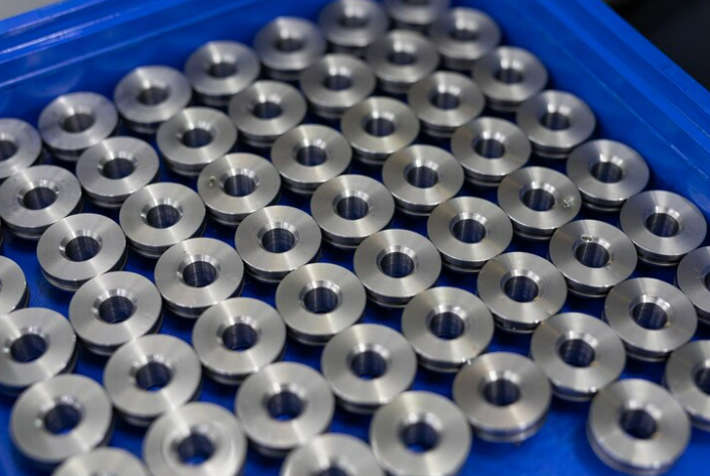
ขั้นตอนกระบวนการสำหรับครีบกลึง CNC:
1.การออกแบบและการสร้างแบบจำลอง:
ก่อนผลิตส่วนประกอบ CNC การออกแบบ CAD (Computer-Aided DESIGN) เป็นสิ่งจำเป็น วิศวกรออกแบบใช้ซอฟต์แวร์ CAD เพื่อสร้างแบบจำลอง3D ของหน้าแปลนกำหนดรูปทรงเรขาคณิตขนาดและเส้นทางการตัดเฉือน
2.การเตรียมวัสดุ:
เลือกวัตถุดิบที่เหมาะสมโดยทั่วไปโลหะ (เช่นสแตนเลสอลูมิเนียมฯลฯ) การเลือกวัสดุขึ้นอยู่กับวัตถุประสงค์ของหน้าแปลนสภาพแวดล้อมการทำงานและความต้องการด้านประสิทธิภาพ
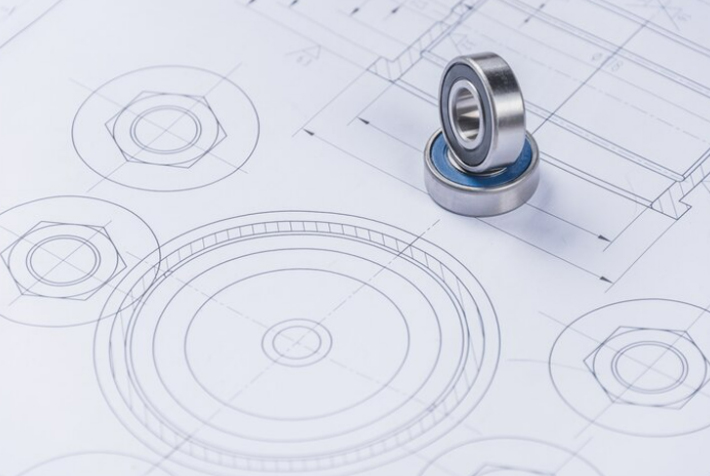
3.กระบวนการตัดเฉือน:
ก. หยาบ:
ใช้เครื่องมือตัดบนเครื่อง CNC เพื่อทำการหยาบประมาณสร้างรูปแบบโดยรวมของชิ้นงาน
เป้าหมายของการหยาบคือการลบวัสดุส่วนเกินอย่างรวดเร็วออกจากรูปร่างสุดท้ายโดยประมาณ
B. กึ่งสำเร็จรูป:
ใช้เครื่องมือที่แตกต่างกันเพื่อกึ่งเสร็จสิ้นชิ้นงานต่อไปใกล้รูปร่างสุดท้าย
ลดความเร็วในการตัดเพื่อเพิ่มความเรียบเนียนของพื้นผิว
C. การตกแต่ง:
ใช้เครื่องมือขนาดเล็กสำหรับการตัดความแม่นยำขั้นสุดท้ายเพื่อให้ได้ขนาดสุดท้ายและความเรียบของพื้นผิว
การตกแต่งมักเกี่ยวข้องกับการใช้เครื่องมือขนาดเล็กเพื่อเพิ่มความแม่นยำในการตัดเฉือน
D. การตัดเฉือนรูและการตัดเกลียว:
ใช้เครื่องมือพิเศษสำหรับการตัดเฉือนรูและการตัดเกลียวเพื่อให้แน่ใจว่าหน้าแปลนตรงตามข้อกำหนดการออกแบบ
4.การตรวจสอบและการควบคุมคุณภาพ:
หลังจากขั้นตอนการตัดเฉือนแต่ละครั้งให้ทำการตรวจสอบเพื่อให้แน่ใจว่าขนาดรูปร่างและคุณภาพของชิ้นงานตรงตามข้อกำหนดข้อกำหนด วิธีการตรวจสอบทั่วไปได้แก่การวัดพิกัดการทดสอบความหยาบของพื้นผิวและการทดสอบอัลตราโซนิก
5.การรักษาพื้นผิว:
ขึ้นอยู่กับความต้องการทำการรักษาพื้นผิวเช่นขัดพ่นทรายหรือเคลือบเพื่อเพิ่มลักษณะและความต้านทานการกัดกร่อน
6.บรรจุภัณฑ์และการจัดส่ง:
หลังจากเสร็จสิ้นการตัดเฉือนและการตรวจสอบแพคเกจหน้าแปลนตามความต้องการของลูกค้าและดำเนินการกับการจัดส่ง
เครื่องจักรกลซีเอ็นซี (การควบคุมเชิงตัวเลขด้วยคอมพิวเตอร์) เป็นกระบวนการผลิตที่ซอฟต์แวร์คอมพิวเตอร์ที่ตั้งโปรแกรมไว้ล่วงหน้าควบคุมการเคลื่อนไหวของเครื่องจักรและเครื่องมือ กระบวนการนี้ช่วยให้สามารถสร้างชิ้นส่วนที่แม่นยำและซับซ้อนได้สูงจากวัสดุต่างๆรวมทั้งโลหะและพลาสติก เครื่องจักรกลซีเอ็นซีใช้กันอย่างแพร่หลายในอุตสาหกรรมต่างๆเช่นยานยนต์อิเล็กทรอนิกส์และการบินและอวกาศ
การหมุน CNC เหมาะอย่างยิ่งสำหรับการผลิตชิ้นส่วนทรงกระบอกหรือกลมเช่นเพลาบูชสกรูและหมุด มักใช้สำหรับส่วนประกอบที่ต้องการพื้นผิวที่มีความแม่นยำสูงและเรียบ อุตสาหกรรมต่างๆเช่นยานยนต์การแพทย์และอิเล็กทรอนิกส์ได้ประโยชน์จากชิ้นส่วนเปลี่ยนอลูมิเนียมจากจีน.ค่าาา
มองหาผู้จัดจำหน่ายที่มีประสบการณ์มากมายอุปกรณ์ที่ทันสมัยและความมุ่งมั่นที่แข็งแกร่งในการควบคุมคุณภาพ การรับรองเช่น ISO 9001และ iatf 16949ระบุว่าสอดคล้องกับมาตรฐานอุตสาหกรรม นอกจากนี้พิจารณาปัจจัยต่างๆเช่นกำลังการผลิตเวลานำและความคิดเห็นของลูกค้า
ที่ HHC เรานำเสนอชิ้นส่วนที่มีความแม่นยำพร้อมความคลาดเคลื่อนที่แน่นเท่ากับ ± 0.01มม. ทำให้มั่นใจได้ว่ามีความแม่นยำสูงสำหรับแม้แต่ส่วนประกอบที่ซับซ้อนที่สุด อุปกรณ์ขั้นสูงของเราช่วยให้เราสามารถรักษาความสม่ำเสมอและตอบสนองความต้องการเฉพาะของแต่ละโครงการ
เวลานำจะแตกต่างกันไปตามความซับซ้อนและปริมาณของชิ้นส่วนแต่โดยปกติเราจะจัดส่งชิ้นส่วนเครื่องจักรกลซีเอ็นซีภายใน1ถึง4สัปดาห์ นอกจากนี้เรายังมีบริการเร่งด่วนสำหรับโครงการเร่งด่วนเพื่อช่วยให้ลูกค้าของเรามีกำหนดเวลาแน่น


